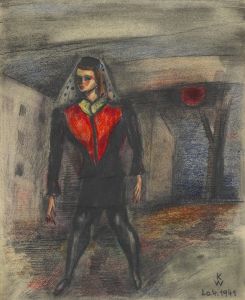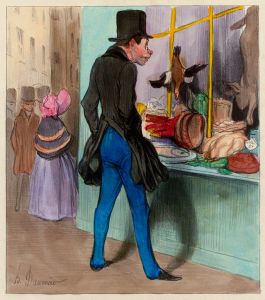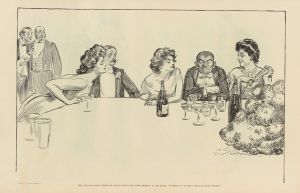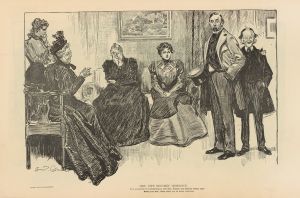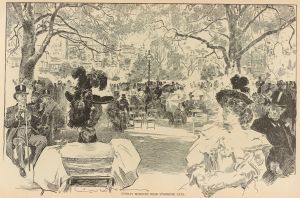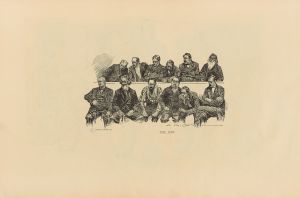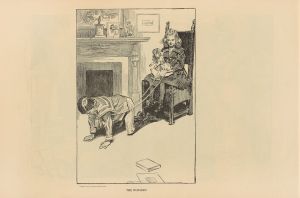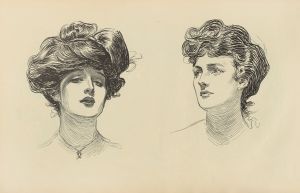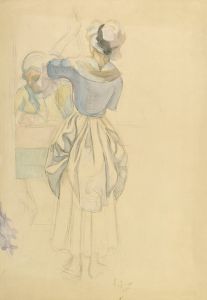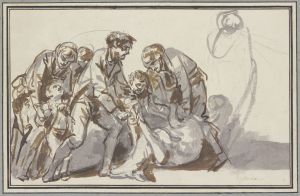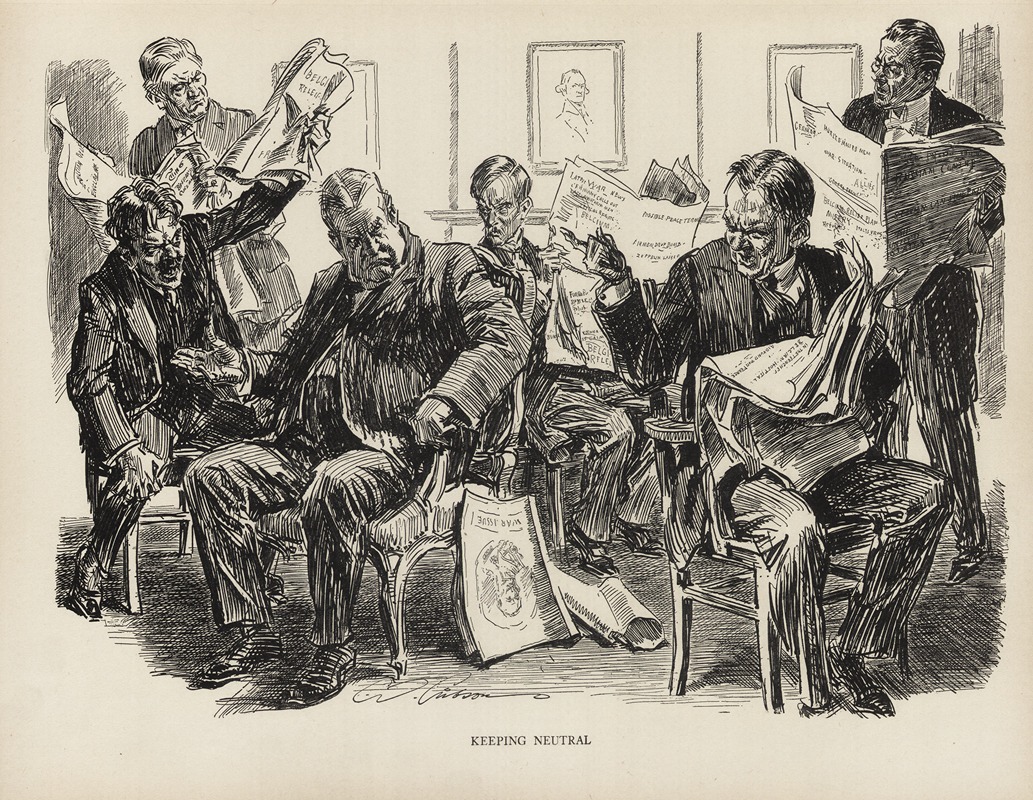
Keeping Neutral
A hand-painted replica of Charles Dana Gibson’s masterpiece Keeping Neutral, meticulously crafted by professional artists to capture the true essence of the original. Each piece is created with museum-quality canvas and rare mineral pigments, carefully painted by experienced artists with delicate brushstrokes and rich, layered colors to perfectly recreate the texture of the original artwork. Unlike machine-printed reproductions, this hand-painted version brings the painting to life, infused with the artist’s emotions and skill in every stroke. Whether for personal collection or home decoration, it instantly elevates the artistic atmosphere of any space.
Charles Dana Gibson was an influential American illustrator, best known for his creation of the "Gibson Girl," an iconic representation of the American woman at the turn of the 20th century. One of his notable works is "Keeping Neutral," a political cartoon that reflects the sentiments and tensions during World War I.
"Keeping Neutral" was published in 1914, a time when the United States was grappling with its stance on the ongoing conflict in Europe. The illustration captures the essence of America's initial position of neutrality during the early years of World War I. Gibson's work often provided commentary on social and political issues, and this piece is no exception. It serves as a visual representation of the complexities and challenges faced by the United States as it attempted to maintain a neutral stance amidst growing international pressures.
The cartoon depicts a personification of the United States, often represented by a figure resembling the "Gibson Girl" or a similar allegorical character, trying to balance on a tightrope. This imagery symbolizes the precarious position of the nation, attempting to avoid entanglement in the war while maintaining diplomatic relations with both the Allied and Central Powers. The tightrope act is a metaphor for the delicate balance the U.S. sought to achieve, reflecting the internal and external pressures that influenced American foreign policy at the time.
Gibson's illustration is characterized by his signature style, which combines detailed line work with a keen sense of satire and social commentary. His ability to convey complex political ideas through simple yet powerful imagery made his work widely recognized and influential. "Keeping Neutral" is a testament to Gibson's skill in capturing the zeitgeist of his era, using art as a medium to engage with and critique contemporary issues.
The context of "Keeping Neutral" is crucial to understanding its impact. In 1914, the United States was deeply divided over the issue of involvement in World War I. President Woodrow Wilson had declared a policy of neutrality, reflecting the isolationist sentiment prevalent among many Americans. However, as the war progressed, economic ties with the Allies and incidents such as the sinking of the Lusitania gradually shifted public opinion and political discourse towards eventual involvement.
Gibson's work, including "Keeping Neutral," played a role in shaping public perception by highlighting the dilemmas faced by the nation. His cartoons were published in popular magazines such as Life and Collier's, reaching a wide audience and contributing to the national conversation about America's role in the world.
In summary, "Keeping Neutral" by Charles Dana Gibson is a significant piece of art that encapsulates the United States' initial stance during World War I. Through his masterful illustration, Gibson provides insight into the challenges of maintaining neutrality in a world increasingly drawn into conflict. His work remains a valuable historical artifact, offering a glimpse into the political and social climate of early 20th-century America.





